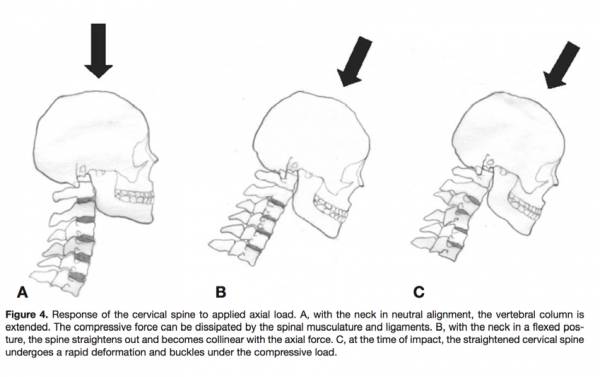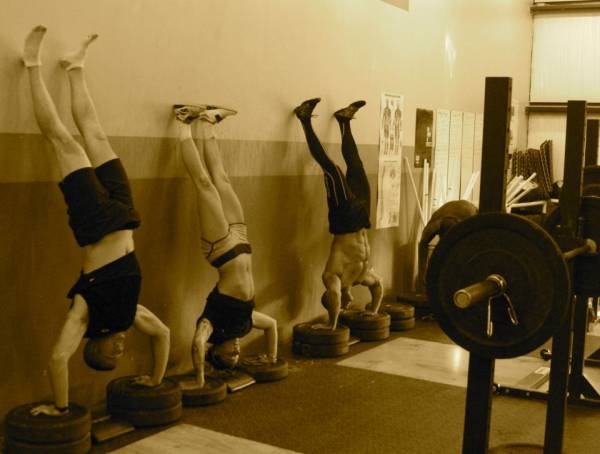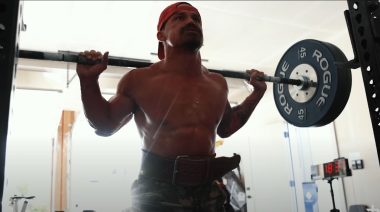I recently moved and started working in a new physical therapy office. Lucky for business, my new office is in the same complex as a CrossFit gym. Initially, I determined that this particular gym must be pretty good, given that in my first two weeks of employment, I only treated three CrossFitters from that gym.
But wait. Let’s do some math on that. In two weeks, I’ve worked six shifts. In those six shifts, I’ve seen three new patients from that gym. That’s a 50% chance that I’m going to have a CrossFitter on my schedule. Hmm.
How Things Go Wrong
One of these CrossFit patients presented to me with a herniated disc in her neck. She reported injuring it about six months ago and not doing anything about it. Then, when she started having symptoms down her arm, she decided to go see someone. If you’ve read any of my articles, you know my opinion of such “problem solving.” And her reported mechanism of injury? Handstand push ups.
Deadlifts, Handstand Push Ups, And Who I Am
How many of you have done “Diane”? To refresh your memory, “Diane” is 21-15-9 deadlifts and handstand push ups. As with most workout in that repetition scheme, the fifteen-rep round is the worst. I often find myself crashing down to the top of my head in that second round because my arm strength has left me. I end up doing handstand push ups in sets of one and two, rather than calculated and mechanically sound sets of five. So what does “Diane” or the handstand push up tell us about ourselves?
Nothing. My “Diane” time a year ago and my “Diane” time today are different. One may be faster, but they are two different days. Did I sleep well, eat well, or drink enough water? Am I on my third day of training? How much overhead work did I do this week? And, at the end of it all, did it change me as a person? No. I am no better or worse a human being in the ten-ish minutes it took me to bust out “Diane.”
So why do we, as CrossFitters and humans, continue to do things that are:
- Not functional
- Have potential to cause harm
- And don’t make a hill of beans difference in the grand scheme of life?
But, I digress. Let me now step down from my soapbox and break apart the handstand push up, as was my intention at the beginning of this article.
Dissecting and Correcting the Handstand Push Up
In the handstand, you must possess the ability to control yourself in a hollow body position while upside down. You must bear the weight of your body plus gravity, and pack your shoulder girdle into a position of strength. This requires thoracic spine mobility, lat flexibility, shoulder girdle mobility, and the ability to stabilize the scapula against the thorax under the load of body weight. Once you have all of that dialed in, it’s time to push your body weight up into the air against gravity. Repeatedly. For time.

Your Head Is Not A Ram
So what happens when you get tired? Instead of relying on your shoulder girdle and core strength (which is now gone because you’re exhausted), you’ve realized there is a nice, cushy Abmat underneath you. All of a sudden you are content with letting your head come crashing down onto it, with your body weight, gravity, and acceleration on top of you. The cervical spine is not designed to accept that kind of load, and something is going to break down.
When the cervical spine is in a neutral position, the vertebral column is relatively extended and can dissipate force through ligamentous and muscular tension. With slight cervical spine flexion, the normal curvature of the spine is eliminated, and the force cannot be dissipated through ligamentous or muscular structures. This results in a significant amount of energy transfer to the vertebrae and discs themselves, rather than the surrounding supporting structures.
 Best-case scenario, you tweak the muscles in your neck trying to provide stability to your now unstable cervical spine. Of the worst-case scenarios, the list is endless. The force placed upon the vertebrae can result in disc herniation, compression, and burst fractures, as well as a spinal cord injury that leaves you paralyzed and using mechanical assistance to breathe.
Best-case scenario, you tweak the muscles in your neck trying to provide stability to your now unstable cervical spine. Of the worst-case scenarios, the list is endless. The force placed upon the vertebrae can result in disc herniation, compression, and burst fractures, as well as a spinal cord injury that leaves you paralyzed and using mechanical assistance to breathe.
Consistency Before Intensity
How important is the handstand push up, really? If you are new to CrossFit, swallow your pride, get your upper extremity and core stronger, and start with piked handstand holds off a box or even banded handstand push ups. Realize that the Abmat is not there to save you. Keep your neck neutral, your shoulders packed, and your core engaged. When you get tired and start failing, come off the wall and rest. The handstand push up will still be there tomorrow. Let’s make sure you show up too.
Pulse Beat Fit has a number of progressions for the handstand push up, such as David Ayres excellent Handstand Push Up and Mobility video.
References:
1. Banerjee. R., M.A. Palumbo & P.D.Fadale, “Catastrophic Cervical Spine Injuries in the Collision Sport Athlete, Part 1: Epidemiology, Functional Anatomy, and Diagnosis” Am J Sports Med. 2004 32: 1077
Photos 1 & 3 courtesy of CrossFit Impulse.






